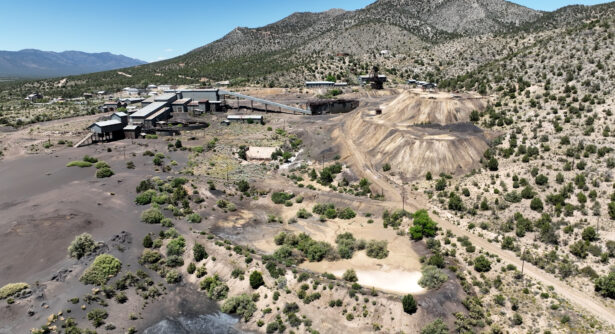
East Wenatchee Washington’s Cherryhill Park made possible with brownfield funding
The City of East Wenatchee Washington is located along the Columbia River in Central Washington. In the early 1900s, non-indigenous settlers planted apple, cherry, apricot, pear and other orchards, which thrived in the cool, dry climate, and with irrigation from the river. The population of East Wenatchee doubled from 2000 to 2010, rising above 10,000 people for the first time in the City’s history. As its population grew, so did the need for new amenities. The City had not created a new park in nearly sixty years and its residents would benefit from more open space and spaces for outdoor recreation and play. With this history as catalyst, the Trust for Public Land (TPL) began looking at opportunities to increase the City’s green space. TLP Is a national nonprofit whose mission is to conserve land for parks, gardens and other natural places to ensure livable communities for generations to come.
Using GIS mapping and interviews with residents and partners, the TPL identified a non- operational cherry orchard as the ideal location for a park. The orchard was active from the 1930s until 2008, and all structures and the trees had previously been removed. The site bordered the Columbia Valley Community Health primary care facility, providing a place for community members to make good on their prescribed exercise and time spent outdoors. A third of the City’s residents also lived within a 10 minute walk, making it easily accessible.. And, at 2.2 acres, the cherry orchard was enough property to create a lovely space for East Wenatchee. The Trust for Public Land determined that the park would serve more than 3,000 residents including 750 children.
The Trust for Public Land purchased the site in 2018 and began their due diligence. TPL conducted environmental site assessments as part of their All Appropriate Inquiries, or AAI. An AAI is an important step for the purchase of any land with unknown prior use, or prior use that may have left contamination. By finding this contamination during the pre-purchase investigation, the Trust for Public Land was able to prove that the contamination pre-dated the nonprofit’s ownership, ensuring the organization could tap into EPA brownfield grants for the site. During the environmental site assessment, it was found that the site had higher than allowed levels of arsenic and other chemicals in the soil.
Arsenic is a naturally occurring chemical element that is toxic to humans and other life. It is commonly a byproduct of metal mining and is regularly found at former mines and in their tailings. It was also commonly used to preserve wood, and can be found polluting sites where lumber was treated. Its toxicity to insects also makes arsenic a potent pesticide, which was used at the East Wenatchee site. Arsenic has since been banned for most commercial, agricultural and home uses in the United States, with non organic cotton being an exception to that rule. However, the phasing out of arsenic-based pesticides was not complete until 2009, meaning the orchard operated entirely while arsenic-based pesticides were legal and widely used.
In order for the park to make good on its mission to be a place of health and outdoor recreation, the arsenic and other chemicals left behind from decades of agricultural use would need to first be removed. TPL’s environmental consultant, Maul Foster & Alongi, recommended the Center for Creative Land Recycling (CCLR) to provide technical assistance in pursuing an EPA Brownfields grant to remediate the site. CCLR assisted TPL in preparing a $500,000 cleanup grant in 2018. The grant was awarded in June 2019 and remediation began soon after. Once remediated, the park development was able to move forward. In March 2022, TPL officially transferred the completed park to the Eastmont Metropolitan Park District, conveying it permanently into the public domain as open space for the enjoyment and benefit of East Wenatchee residents.

Dignitaries walking through Cherryhill Park in East Wenatchee after the ribbon cutting. (Photo Courtesy of Douglas Sherwood)
“Trust for Public Land is proud to partner with the East Wenatchee community to deliver Cherryhill park. It is important fast growing communities like East Wenatchee take steps now to preserve land and create parks for future generations. Contamination due to historic pesticide use is a widespread issue in Central Washington.” Said Andrew McConnico, Northwest Project Manager for the Trust for Public Land, “We are thankful to the EPA for providing funding through the brownfields program. We hope more municipalities and agencies see the EPA brownfields program as not just an opportunity for remediation, but an opportunity to create parks and open space.”
Funding for the park came from: the Land and Water Conservation Fund, the Washington WIldlife and Recreation Program, Columbia Valley Community Health, Icicle Fund, North Central Washington Community Foundation, the Environmental Protection Agency, and dozens of private supporters. CCLR congratulates TPL, as well as the community of East Wenatchee. for its vision, knowledge, and tenacity in this project that will benefit so many people as well as the environment.
Rural brownfields:
When one thinks of brownfields, what comes to mind may be an abandoned factory or derelict gas station or drycleaner. An orchard that hosted trees and other life likely doesn’t register as a contaminated site. While the concentration of brownfields is higher in cities, brownfields exist in any place where past uses may have left behind contamination.
Rural sites that can be brownfields include: out-of-service village tank farms, burned structures, old buildings that may include lead and asbestos, equipment storage and repair facilities, pesticide storage sites, farms, and uncontrolled dumping sites. When in doubt, check it out! CCLR land reuse experts are available to answer your questions regarding potential brownfields in your community and get you started in your brownfields identification and remediation efforts.
EPA Brownfield grants include:
- Assessment Grants provide funding for a number of things including, but not limited to, brownfield inventories, planning, environmental assessments, and community outreach. These funds cannot be used for cleanup.
- Revolving Loan Fund (RLF) Grants provide funding to capitalize loans (as well as providing subgrants to eligible entities) that are used to clean up brownfield sites.
- Cleanup Grants provide funding to carry out cleanup activities at brownfield sites owned by the applicant. These funds cannot be used for assessment work.
- Multipurpose (MP) Grants provide funding to conduct a range of eligible assessment and cleanup activities at one or more brownfield sites in a target area.
- Job Training (JT) Grants provide environmental training for residents impacted by brownfield sites in their communities.
- State and Tribal Response Program Grants provide non-competitive funding to establish or enhance State and Tribal Brownfields response programs.







